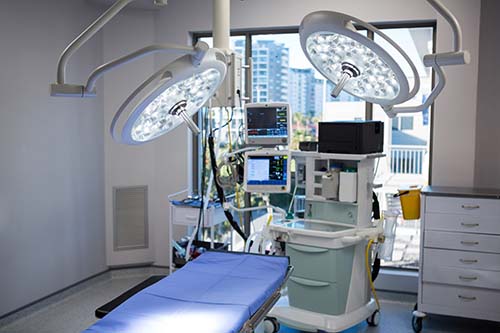
As healthcare continues to evolve as a result of policy changes over the past decade, the most effective medical device manufacturers understand the ramifications of these developments, the priorities of their physicians, and how their product fits into the ecosystem.
Although the political climate has lead to some uncertainty about the Affordable Care Act, elements like increased insurance coverage rates and a focus on patient outcomes seems here to stay.
Medical devices remain a very specific niche and it’s important to keep in mind that fluency in and knowledge of the prospective clients’ ecosystem is a key component to sales strategy. Product quality, price, and innovation will always be important selling points. Yet, in order to remain successful in the highly competitive marketplace, medical device sales professionals must keep up with the current concerns of physicians and tailor their sales strategy to be relevant to this intended audience.
Let’s take a look at some tips that can help sales teams differentiate themselves while providing a value proposition that will impress clinicians and help drive more effective overall sales strategy.
Understand and Leverage Clinician Priorities
Unlike other industries that rely heavily on convincing purchasing managers, medical device sales strategy must also be strongly compelling to the end users: physicians. A device may fill a specific need but it’s also important to see how it fits within the larger picture of a physician’s practice. Understanding their priorities is a good way to help make the device relevant to work on all levels. Device sales leaders should gather necessary research as well as notes from sales rep interactions to compile profiles that can guide strategy. For example, if long-term patient outcomes are the most important metric for physicians buying your device, then make sure to include language about how your device positively impacts long-term patient health.
[Free Whitepaper: Improve Patient Satisfaction by Upgrading Hospital Rooms]
Internalize Industry Trends
Just as important as clinician priorities are the overall trends in healthcare industry. By focusing on these, sales teams can stay attuned to best practice approaches. A recent example is a new focus on security of any Internet of Things (IoT) enabled device in order to minimize their vulnerability to hacking. Device manufacturers should keep in mind that security can be a key differentiation factor when it comes to IoT-enabled electronic devices. Another example is the increase in price transparency. Many states have proposed or passed legislation that seeks more price transparency for prescription drugs. Medical devices may not be far behind. In such areas, pricing may make a difference.
According to a recent Bain study, “healthcare professionals expect major increases in the use of innovative pricing models for medical devices in the next two years,” including such things as pay-for-performance and population-based risk sharing. Having alternative pricing models at your disposal can help empower your sales representatives to meet the expected approach of physicians in today’s changing environment.
Sales strategy should also take the conditions of each territory into account. California, for example, has a large portion of its overall population covered by Medicaid, which imposes a lot of regulation. At the same time, the large increase in insured population with limited price sensitivity to care costs could present a growth opportunity for device manufacturers.
Focus on Evidence of Device Efficacy
Physicians want to know how a product works - along with the evidence that supports these promised results. Foremost, the medical device website should make it easy for a physician to see exactly how a device works. Easy-to-use collateral materials like downloadable, printable PDFs are also essential. All material should include relevant data, testimonials, and study results, if applicable. Physicians look for evidence-based use backed by data. Most physicians cite such evidence of device efficacy as an important criterion in deciding on a product.
Another thing to keep in mind is that procurement is often a group decision within a practice or hospital. Since it’s often not possible for a representative to meet with every decision-maker, high quality sales collateral, particularly documents featuring strong evidence of efficacy, can make a difference.
Don’t Over-Promise in Sales Material
It’s strongly advisable to promise only what a device will deliver, based on internal research and device history. Some sales teams will incorporate language into marketing collateral and strategy that alludes to off-label uses, or overstates patient outcomes or ease of use. This can lead to physicians being underwhelmed by the product. Most medical sales representatives recognize that living up to promises, both in terms of the sale process and the device’s benefits, are key to reorders and continued business relationships with physicians. Don’t make the mistake of hyping device benefits for short-term gain, since this can only lead to physician distrust if the device under-delivers. It can also invite regulatory scrutiny and litigation.
Don’t Ignore Consumers
Finally, device manufactures should not discount the value of having consumer-ready information on their website. Many patients today look up devices mentioned by friends and doctors, and those with options may even request a particular device.
Nevertheless, while reaching patients is another important avenue, the chief focus should be on ensuring all sales material reflects an understanding of the healthcare industry and the specific concerns of the physicians you’re approaching.
By following these tips, you can shore up your medical device sales strategy and remain competitive.
What hospital upgrades can help improve patient satisfaction? Download our free whitepaper to learn more.
